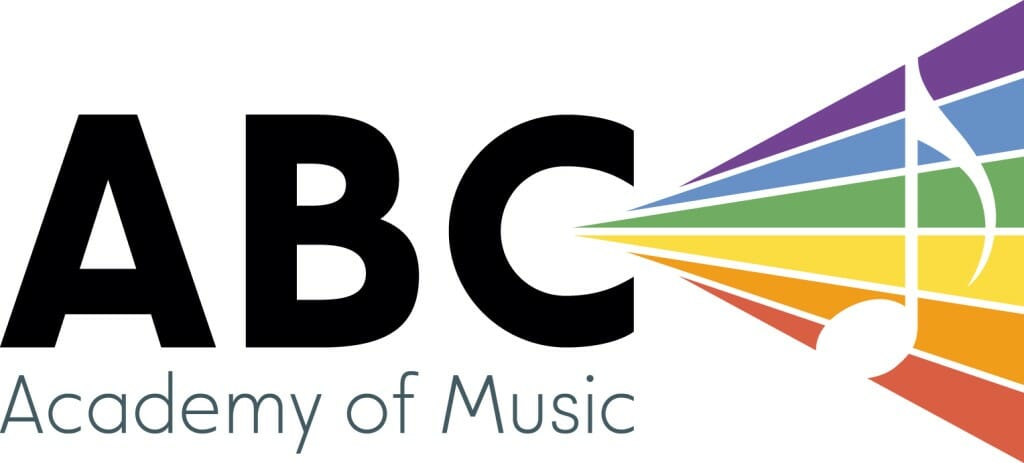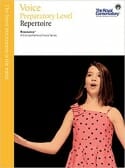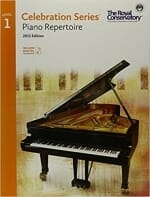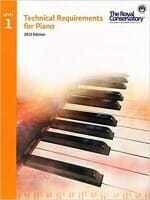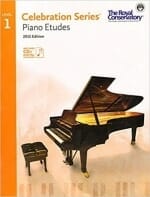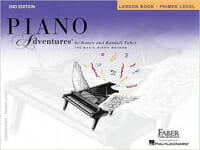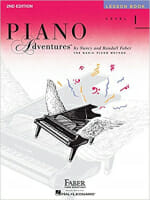Trevor Flemings is a pianist, teacher, and active interdisciplinary performance artist based out of Toronto. Trevor is a recent graduate of the Masters of Collaborative Piano program at the University of Toronto, additionally receiving a Bachelor’s of Piano Performance from the University of Regina.
Originally from Sydney, Nova Scotia, Trevor grew up in rural Saskatchewan, where they discovered a love for developing community connections through art and education. From their studies, Trevor has developed a particular interest in keyboard pedagogy, the collaborative repertoire of art song, choral music, new music and improvisation, as well as experimental sound/performance art. Through both performance and pedagogy, Trevor has developed into an eager and inquisitive interdisciplinary artist, seeking to share their love for music and community.
In the learning environment, Trevor places a simultaneous focus on creative thinking and discovery learning, while also developing a strong foundational knowledge of technical ability, Western Classical music theory, and the wider history of music. In this way, Trevor endeavours to meet students where they are, imparting both strong foundational skills and knowledge, as well as a positive lifelong relationship with the arts through whichever musical journey students wish to take.
Get to know Trevor…Beyond the Bio!
Hobbies: Gardening, Watching Horror Movies, Baking, Improvising, Video Games, Needle Felting
Musical Influences: Björk, Kristin Hayter, Olivier Messiaen, Nicole Lizée, Fiona Apple, Tanya Tagaq, Anohni
Favourite Food: Tofu
Least Favourite Food: Cinnamon Candy
Favourite Music: Post-Tonal Solo Piano, Post-Romantic Art Song, Alt. Pop, Punk, Noise, Rap
Favourite Album: Puberty 2, Mitski
Favourite Movie: Suspiria
Favourite Musical theatre/opera: Candide
Best Quote from your teacher: “Every mistake is another door opening, you can close it and try again or go through and see what it sounds like!”
Favourite quote: “It’s probable that in the artistic hierarchy birds are the greatest musicians existing on our planet.” -Olivier Messiaen
Favourite Book: The Golden Compass, Philip Pullman
Latest Homework from Trevor
Is Trevor Your Teacher?
Sign up now to get your weekly assignments delivered, and never lose your homework sheet again!
Assignments for the Week of April 23, 2025
Clara
Technical Exercises – A Major
- 1 octave scale, hands separately and together: practicing as solid blocked hand positions and stepping
- 1 octave triads – solid hands separately
- Finding separate root position, first inversion, and second inversion triads from the lap to the keyboard
- Moving back and forth between chord inversions, as well as ascending/descending through all inversions
Bartok – #7 hands together fully – practicing saying note names out loud
Melody in G Major – Focusing on dynamics overall
- Making sure our right hand is “singing” over our left hand! Sing along as a way to help bring it out in the fingers
- Keeping our left hand gentle (instead of thinking “loud-soft-loud-soft”, thinking a gentle “down-up-down-up”)
- Clear difference between mezzo-forte and mezzo-piano dynamics
- Watching out for decrescendos, as well as our ending ritardando
On the Trampoline
- Excellent work getting our time signature comfortable! Keep up with focus on this, especially in our last line as our right hand jumps around
- Focusing on the right hand ending, practicing moving back and forth between chords (focus on finger 5!)
- Dynamics at the end – crescendo to a full forte (don’t forget the left hand!) ending in a sudden mezzo-piano
The Storm – Thinking about our new composition idea!
- Thinking about what kind of scene/story you want to share with it – What kind of rain is there? Is there heavy thunder? Is there a lot of lightning? Is it a hailstorm? How fast is the wind? Is there a tornado with a herd of cows spinning around in it?
- Try writing all of this down in a short story, poem, couple of sentences; try drawing a picture of the storm
- Think about the kinds of sounds you might hear, or how they might sound on the piano
- Try drawing a visual score with shapes and lines that could represent your storm like we tried in lesson!
Hakim
Technical Exercises – A Major
- 1 octave scale hands separately and together, practicing as solid hand positions and stepping
- 1 octave triads, hands separately – solid and broken
- Ascending and descending
- playing through root position – first inversion – second inversion – root position
- Make sure you are using the same fingerings in solid and broken triads. Always using fingers 1 and 5 for outside notes
- Rh finger 2 only in first inversion, Lh finger 2 only in second inversion
Gymnopedie #1 – please make sure this is printed and brought to next week’s lesson! We want to make sure we are using consistent fingerings so things stick in the brain more efficiently, and this will help.
- Focusing on hands separate practice from measures 13-21, making sure we can comfortably play through this at least hands separately
- Trying to fit from the beginning to measure 21 fully hands together if you are up for it!
- Lh watching out for new hand positions (F#, B, E) in measures 17-20
- Make sure you know which chord our LH moves to on beat 2 of each measure
- Practice moving back and forth between bass notes and chords in the Lh to get them as comfortable as our introduction
- Watch out for Rh playing different notes measures 8-11 (A moves down to F#) and measures 16-19 (A moves up to C# moves up to F# leaps down to E)
- Rh moving on trying to read through measures 22-31, writing in note names with pencil
Assignments for the Week of March 29th, 2025
Shakira
Skating Waltz – Hands separate focus before putting hands together
- Making sure LH melody is confident on it’s own – measures 1-4 same as measure 5-8, then fingers 1 and 2 wandering down B-Bflat-A-Aflat-G
- RH chords shifting – measures 1-2 on E and G (fingers 1 and 3), measures 3-4 on F and G (fingers 2 and 3
- RH changing positions measure 11 (finger 1 on C and 4 on F)
Bartok Exercises – Reading through exercises #1-5 hands separately and together, saying note names out loud
Clara
Technical Exercises – D and A Major 1 octave scales – hands separately and hands together (trying slowly)
- Practicing as solid groups of fingerings and stepping through (legato and staccato)
- RH fingering groups of 3 and 5, LH fingering groups of 5 and 3 – Make sure you know where your sharps are in your hand position!
- D Major – 2 sharps (F#, C#)
- A Major – 3 sharps (F#, C#, G#)
Bartok Exercises – Working through #7-8, trying hands separately saying note names out loud
- Checking starting note (space notes – Bass Clef: All, Cows, Eat, Grass – Treble Clef: FACE in the Space)
- Checking starting finger number – is it the bottom finger of your hand position? The top? Somewhere in the middle?
Trampoline – Thinking about our time signature as we play through, our RH beat 3 leads to LH beat 1!
- Nice strong accents in our LH chords
- Making sure LH chord changes are comfortable – practicing going back and forth between them
- RH jumps at the end – make sure we don’t return to our beginning hand position! Staying high at the top of Treble clef for our larger chords in our last line.
Bluebottle – New piece! Finding starting hand positions and looking through for patterns. Notice how our RH and LH work with each other.
- Keeping an eye out for rests in both of our hands! Working through first only hands separately and noticing what exact beats we have rests on. Try playing through hands separately and breathing in on rests so we notice them on purpose, then try playing hands separately and just counting out loud.
- Once fully comfortable hands separately, try fitting hands together in small groups of measures – counting out loud will help us keep track of all of our rests.
Hakim
Technical Exercises – Continuing with A Major
- 1 octave scale hands together and separately, practicing as solid groups of fingerings (Rh 3 and 5, LH 5 and 3) and stepping through. Trying legato and staccato
- 1 octave triads, solid and broken – blocking out solid chords first, watch out for only using our Chord notes:
- A, C# and E (no accidental F’s!)
- Make sure you are using the same fingerings in solid and broken triads. Always using fingers 1 and 5 for outside notes, using finger 3 on every chord except for RH first inversion (C#-1, E-2, A-5) and LH second inversion (E-5, A-2, C#1)
Bartok Exercises – Reading through #6 and 7 – be prepared to play through both of them hands together while saying all note names out loud!
- Double checking and writing in starting notes for both exercises, noticing marked finger numbers
Satie – Gymnopedie #1 – Printing off for this week, only practicing hands separately for now.
- LH practice as our main focus – breaking apart into our Bass Line and Inner Chords before fully playing
- Make sure LH finger 5 can play through our Bass Line at least to the end of page 1 – writing in any low notes below bass clef that we aren’t sure of so we aren’t guessing.
- Practice moving between Middle Chords without leaping down to our Bass line. Once your hand is comfortable finding these chords, try moving back and forth between Bass line notes and Middle Chords (first by looking ahead and watching your hands, then with your eyes closed when you are feeling confident)
- RH – Working through our first page only, not hands together at all yet
- Our hand position shifts a lot, so we want to make sure we are using the same fingerings each time so we don’t get confused.
- Write in any notes you are unsure of at the moment so you can confidently try playing through, write in fingerings that feel comfortable when you are playing- we will go over these together next week.
Assignments for the Week of February 26th, 2025
Hakim
Technical Exercises
-Continuing with our A Major 2 octave scale, and our A Major triads with inversions (just HS)
- Practicing mostly hands separately, trying hands together if we are feeling confident
- Practicing blocked hand positions before stepping through – especially for 2 octave scales, it is very easy to lose track of our position in the scale! This will help feel secure.
RH 1 2 3 1 2 3 4 1 2 3 1 2 3 4 5
A B C# D E F# G# A B C# D E F# G# A
LH 5 4 3 2 1 3 2 1 4 3 2 1 3 2 1
Calico Cat – Now that it is starting to fully fit hands together and we are getting comfortable with the flow, we want to make sure we are thinking about the energy of our piece and aren’t guessing at all for notes. This is the time to double check notes/hand positions so you are completely confident next week!
- Using the crescendos in places like measures 1-4 and 17 to the end to show rising energy
- Keeping a steady pulse all the way throughout, not letting our hands changing positions cause any hiccups!
- Make sure you are completely sure of which octave each section starts in
- For example, in measures 1-8 LH stays low in Bass Clef while RH rises an octave higher each measure
- Measures 9-12 and 13-16: be careful that our LH is in the correct octave – staying 2 octaves apart when changing hand positions in measure
Clara
Technical Exercises – Continuing to practice our C Major and G Major 1 octave scales
- Playing through our solid blocked hand positions (groups of 3 and 5 fingers) to make sure we are confident in what is under our fingers
- Practicing both hands separately and hands together
- Practicing stepping through while saying notes out loud, being careful not to jump to finger 5 when changing hand positions!
- When practicing hands together, if we would like an extra challenge we can try moving our hands further apart and playing through! (2, 3, or even 4 octaves apart instead of 1)
RH 1 2 3 1 2 3 4 5
G A B C D E F# G
LH 5 4 3 2 1 3 2 1
Bartok Exercises – Continue on to exercises number 4, 5, and 6 (page 2 of our booklet).
- Make sure to double check our starting notes for both hands, as well as which exact octave on the keyboard we are going to be.
- Practicing saying our note names out loud, and counting our pulse out loud.
- Watch out for changing rhythms, remember that Bartok likes to change things unexpectedly!
Melody in G Major – Excellent work smoothing out some of our trickier hands together sections! Now that we are able to smoothly play through this piece, we want to focus in and practice our details.
- For this week, I would like you to avoid playing through the entire piece – only practicing smaller groups of measures and starting from places that we’ve marked in the score (not the beginning!)
- We want to get used to being able to start anywhere in our pieces while practicing, not just from the very beginning.
- LH – Listening to our melody that is created by our LH lower notes!
- Practicing with a “down/up” motion in our LH so that we can hear our melody on beats 1 and 3 in each measure (thinking “loud/soft” for each group of 2 notes)
- If we are struggling with our “down/up” motion, also playing as “long/short” so we can feel comfortable landing on our “down” notes.
Assignments for the Week of January 22nd, 2025
Hakim
Technical Exercises – Continue practice on D Major scale – 1 octave stepping hands separately and together
- Focusing on stepping down our scale, especially in the left hand
- Still practicing as solid blocked hand positions hands separately, so your left hand is feeling confident hands together!
Bartok – Practicing fully hands together, making sure you are able to confidently play through both #7 and 8
- #7 – Noticing changes in our rhythmic pattern (measures 1-4 different from 8-11)
- #8 -Watching out for F# in our key signature. Changing hand positions at measure 9 – shifting our hand from an E minor position down a step, to a D Major position (F# shifting from RH finger 2, to RH finger 3)
The Calico Cat
- Practicing hands separately all the way to the end! Focusing on RH measures 9 to the end.
- Practicing hands together up to measure 9.
- When practicing hands together, watch out for when our hands are playing together (measure 1 beat 1) versus when they are responding to each other (measure 1 beat 4 LH responds to our RH eighth notes). Counting out loud will help understand exactly how they fit together.
Clara
Technical Exercises – Continue practicing our C Major scale hands separately and together
- Practicing with a legato, staccato, and detached articulation so we are feeling comfortable and ready to jump into a new scale next week!
- Try using a metronome to see what your most comfortable speed is, then challenge yourself to increase our speed while staying comfortable and relaxed in our hands.
Lesson Book – Allegro in C Major
- Similar to our scale, checking our most comfortable speed with our metronome at home, then seeing if we can increase our overall speed.
- Goal speed: 80-85 BPM all the way through
- Break things into smaller groups of measures – focusing on tricky spots where our left hand is holding our speed back, practicing hands separately until the left hand is as comfortable as our right hand.
- Make sure we are noticing our right hand legato markings!
Melody in G Major – Hands separate practice only, focusing on our left hand more than right
- Our pattern is constantly changing, going back and forth between changing lower notes and our D in finger 1. If you need to write in any finger numbers or note names that is totally fine!
- For our left hand, practicing very slowly while saying note names out loud in small chunks. Make sure you are able to confidently play through measures 1-4 (at least!) while saying note names out loud.
- Our left hand is quite busy in this piece, so make sure we are feeling loose and relaxed as we play. Turning our hand like we are turning a door knob as we rotate back and forth is a good way to stay relaxed!
Assignments for the week of January 15th, 2025
Hakim
Technical Exercises – Continue practicing D Major scale
- 1 octave hands together, especially focusing on stepping down in the scale
- Practice as solid blocked hand positions, and stepping legato, staccato, and detached
Bartok Exercises – Working through #7 and 8
- Make sure you are confident of starting notes/hand positions
- Watch out for changing hand positions and new key signature in #8
The Calico Cat – Practicing hands separately to the end
- aiming to have measures 1-9 somewhat comfortable hands together already
- make note of the pattern in our hand position changes, our RH is focusing on an A minor hand position throughout the entire piece!
- Counting through dotted quarter rhythms in measures 9-14
Bizville – Continue practicing our LH “groove” in the first phrase, watching out for large leaps between B flat and F!
- Practicing our rh on its own, making sure you can confidently clap and count our RH rhythm in the first two measures
- Try fitting our first two measures hands together – watch out for when our hands line up when we count through
Clara
Technical Exercises – Continue practicing our C Major 1 octave scale
- Hands separately and together
- Practicing with legato, staccato, and detached articulations
- See how quickly you are able to comfortably play through this scale hands separately, and hands together. Check with a metronome to see what your top speed is!
Lesson Book
- Allegro in C Major
-
-
- Continue slow hands separate practice all the way through, watching for patterns and things that repeat
- Once you are fully comfortable hands separate, break our music into smaller chunks (2-4 measures) and practice slowly hands together
-
- The Juggler
-
- Practice playing all the way through hands separately
- Counting out loud to keep track of all of our rests! This will make fitting hands together even easier for us
- If we are feeling comfortable hands separately while counting out loud, practice hands together while counting out loud very slowly
Assignments for the Week of December 4th, 2024
Hakim
Technical Exercises – G and D Major scales 1 octave – practicing hands separately
- Practicing as solid groups of fingers (RH groups of 3 and 5, LH groups of 5 and 3) and stepping through
- Saying note names out loud as you play, making sure you know which sharps you need for each scale
- (G Major – F#, D Major – F# and C#)
Bartok – #7-9
The Calico Cat – Beginning to work hands separately
- Focusing on an A minor 5 finger hand position moving up and down the keyboard.
Bizville – Finding layers in each hand – focusing on our Left hand “groove”
- Focusing on B flat in the left hand, jumping between octaves – Make sure you know which octave you start in
- Figuring out where each main beat in your measure is!
Clara
Technical Exercises – C Major scale – one octave hands separately
- Practicing as solid blocks of fingerings and stepping through – saying note names out loud.
Lesson Book – pages 68-71 – focusing on reading rests while playing
- Thinking of our rests as beats of silence where we listen, instead of stopping and pausing at rests.
- Acknowledge any rests as you play (breathing on the rest or saying “rest” out loud are easy ways to keep track of them)
Assignments for the Week of March 29th, 2025
Shakira
Skating Waltz – Hands separate focus before putting hands together
- Making sure LH melody is confident on it’s own – measures 1-4 same as measure 5-8, then fingers 1 and 2 wandering down B-Bflat-A-Aflat-G
- RH chords shifting – measures 1-2 on E and G (fingers 1 and 3), measures 3-4 on F and G (fingers 2 and 3
- RH changing positions measure 11 (finger 1 on C and 4 on F)
Bartok Exercises – Reading through exercises #1-5 hands separately and together, saying note names out loud
Clara
Technical Exercises – D and A Major 1 octave scales – hands separately and hands together (trying slowly)
- Practicing as solid groups of fingerings and stepping through (legato and staccato)
- RH fingering groups of 3 and 5, LH fingering groups of 5 and 3 – Make sure you know where your sharps are in your hand position!
- D Major – 2 sharps (F#, C#)
- A Major – 3 sharps (F#, C#, G#)
Bartok Exercises – Working through #7-8, trying hands separately saying note names out loud
- Checking starting note (space notes – Bass Clef: All, Cows, Eat, Grass – Treble Clef: FACE in the Space)
- Checking starting finger number – is it the bottom finger of your hand position? The top? Somewhere in the middle?
Trampoline – Thinking about our time signature as we play through, our RH beat 3 leads to LH beat 1!
- Nice strong accents in our LH chords
- Making sure LH chord changes are comfortable – practicing going back and forth between them
- RH jumps at the end – make sure we don’t return to our beginning hand position! Staying high at the top of Treble clef for our larger chords in our last line.
Bluebottle – New piece! Finding starting hand positions and looking through for patterns. Notice how our RH and LH work with each other.
- Keeping an eye out for rests in both of our hands! Working through first only hands separately and noticing what exact beats we have rests on. Try playing through hands separately and breathing in on rests so we notice them on purpose, then try playing hands separately and just counting out loud.
- Once fully comfortable hands separately, try fitting hands together in small groups of measures – counting out loud will help us keep track of all of our rests.
Hakim
Technical Exercises – Continuing with A Major
- 1 octave scale hands together and separately, practicing as solid groups of fingerings (Rh 3 and 5, LH 5 and 3) and stepping through. Trying legato and staccato
- 1 octave triads, solid and broken – blocking out solid chords first, watch out for only using our Chord notes:
- A, C# and E (no accidental F’s!)
- Make sure you are using the same fingerings in solid and broken triads. Always using fingers 1 and 5 for outside notes, using finger 3 on every chord except for RH first inversion (C#-1, E-2, A-5) and LH second inversion (E-5, A-2, C#1)
Bartok Exercises – Reading through #6 and 7 – be prepared to play through both of them hands together while saying all note names out loud!
- Double checking and writing in starting notes for both exercises, noticing marked finger numbers
Satie – Gymnopedie #1 – Printing off for this week, only practicing hands separately for now.
- LH practice as our main focus – breaking apart into our Bass Line and Inner Chords before fully playing
- Make sure LH finger 5 can play through our Bass Line at least to the end of page 1 – writing in any low notes below bass clef that we aren’t sure of so we aren’t guessing.
- Practice moving between Middle Chords without leaping down to our Bass line. Once your hand is comfortable finding these chords, try moving back and forth between Bass line notes and Middle Chords (first by looking ahead and watching your hands, then with your eyes closed when you are feeling confident)
- RH – Working through our first page only, not hands together at all yet
- Our hand position shifts a lot, so we want to make sure we are using the same fingerings each time so we don’t get confused.
- Write in any notes you are unsure of at the moment so you can confidently try playing through, write in fingerings that feel comfortable when you are playing- we will go over these together next week.
Assignments for the Week of December 14th, 2024
Shakira
Technical Exercises – Continue hands separate practice of 1 octave C Major scale
- Practicing as solid blocked groups of fingers so you are comfortable changing hand positions, then practicing stepping through (still keeping groups of 3 and 5 in mind!)
- RH – CDE/123-FGABC/12345
- LH – CDEFG/54321-ABC/321
Shadows – Continue working hands separately and together
- Make sure you know where hands change position (LH changes right away in measure 2 for our melody, RH changes in measure 7 to reach F/G with fingers 2/3
- Thinking ahead in places that might surprise us
- For example: RH measure 2 versus 4 – watching for changing rhythm; measures 5-7 only our LH ends on G, RH stops on F to shift hand position
Owl in the Night – New piece!
- Staying in the same starting position as Shadows (C minor – with E flat) Trying to piece together both hands already for next week (doesn’t need to be fast/”perfect” in any way!)
- Passing ideas/patterns back and forth between the hands
- Watching for steps vs skips in our pattern (as we can see right away in the LH, stepping up and skipping down)
- Already watching for dynamic shapes – when we step up we crescendo/grow louder, stepping/moving down we decrescendo/get softer
Assignments for the Week of November 16th, 2024
Shakira
Technical Exercises
- Finding and playing 5 finger major scales in a C, G, and D position. (Watching out for F# in D Major!)
- Practicing a C Major 1 octave scale, hands separately – practicing as solid blocked hand positions (groups of 3 and 5 fingers), as well as stepping through the whole scale.
Bartok – Practicing reading exercises #1-3 hands separately and together.
- Finding starting notes (FACE in the space for Treble clef, All Cows Eat Grass for Bass clef) and watching for steps up or down as you play through first hands separately, then together.
Lunar Eclipse – Continuing work hands together in our first section.
- Practicing Left Hand on its own so you know where it will be leaping. Double check and write in notes if you need to.
- When adding hands together, remember that we are passing the idea back and forth between our LH melody and RH C minor triad pattern.
Assignments for the week of September 28th, 2024
Shakira
Practicing – Planning out short chunks of practice (5-10 minutes at a time) – choose 1 thing from our list of things to do and focus only on that.
-Practice reading through a small group of measures a few times, speak through note names, or practice finding 5 finger hand positions from scales, etc.
Technical Exercise – 5 finger scales (starting on C, G, D, A, and E)
-Finding starting hand position from the previous review sheet. Checking which notes are in the hands in this position and stepping up/down. Saying note names out loud as you go. 5 finger scale hand positions – Shakira
Bartok Exercises – Reading through the first page of exercises, double checking note names based on review sheet. (Remember, FACE in the space, and All Cows Eat Grass)
-All exercises in a 5 finger position, moving through only in steps.
-Play through while paying attention to the shape of each line when we “connect the dots” between notes – making sure you are watching which direction the musical line is moving (up/down)
Lunar Eclipse – Finding left hand notes and making sure you are comfortable moving between them separate from the right hand. Try adding both hands together, passing the musical line from left hand note to right hand pattern.
-Making sure right hand is outlining C-Eflat-G using only fingers 1-3-5.
Assignments for the week of September 14th, 2024
Shakira
Technique Exercises: working in C Major (no sharps/flats)
1 Octave C Major scale – Practicing as solid blocked groups of fingers within each hand position, bouncing back and forth between positions. Thinking ahead before moving. Once comfortable with shifting between hand positions fully, stepping through the scale slowly.
C Major solid triads – Practicing finding and moving between C major root position, first inversion, and second inversion triads. Following the fingerings on the attached page of notes. Review Note Page – Shakira
Bartok Exercises – Read through exercises 1-3 (all of page 1), focusing on following the shape and contour of the notes as you read instead of thinking one note at a time. Paying close attention and double checking starting notes for each exercises LH and RH (they will all be parallel motion on the same notes between hands) Bartok Mikrokosmos Book 1 1-19
Lunar Eclipse – Begin working through hands separately at first, until you notice the RH pattern, then working hands together. Watch out for any patterns you notice, double check any note names you aren’t 100% certain of (see attached page of review notes).Lunar Eclipse
The following link is to a reliable recording of Lunar Eclipse for you to listen to:
Preferred Books for Trevor’s Students
Click to buy them here, and they’ll come right to your house! What could be easier?
RCM Voice Repertoire
A Comprehensive Voice Series serves as the official resource for voice assessments of the Royal Conservatory Music Development Program. Featuring an outstanding selection of voice literature and supporting materials, this series offers a truly enriched learning experience to help ensure student success. As in previous editions, Resonance encompasses a rich and varied selection of Repertoire, Vocalises and Recitatives that students of all ages and voice types will find appropriate to their musical interests and level of technical ability.
Belting - A
Written for ages 5 and 6, My First Piano Adventure captures the child’s playful spirit. Fun-filled songs, rhythm games and technique activities develop beginning keyboard skills.
Faber & Faber Piano Adventures
The 2nd Edition Primer Lesson Book introduces the keyboard, note values, and the grand staff. Students play in C 5-finger scale patterns, develop recognition of steps and skips, and learn letter names independent of finger number. Musicianship is built through the use of dynamics and coloristic experimentation with the pedal. The book is organized into units which represent the major concepts and skills. As new units are introduced, earlier concepts and skills are constantly reviewed.
Faber Piano Adventures
The 2nd Edition Level 1 Lesson Book introduces all the notes of the grand staff, elementary chord playing, and the concept of tonic and dominant notes. Students play in varied positions, reinforcing reading skills and recognizing intervals through the 5th. Musicianship is built with the introduction of legato and staccato touches. This level continues the interval orientation to reading across the full range of the Grand Staff. The 5-finger approach is presented here in a fresh, musically appealing way.
Belting - A
Written for ages 5 and 6, My First Piano Adventure captures the child’s playful spirit. Fun-filled songs, rhythm games and technique activities develop beginning keyboard skills.
Elementary Rudiments of Music
This series organizes concepts into three progressive levels with an Answer Book. Designed for intermediate to late-intermediate level students, it teaches the basic elements of music theory and complements the study of all instruments.
The Brown Scale Book
This essential resource includes all major and minor scales, triads, arpeggios, dominant sevenths, and chromatic scales organized by key. A favorite for decades, The Brown Scale Book belongs in every student’s library.
